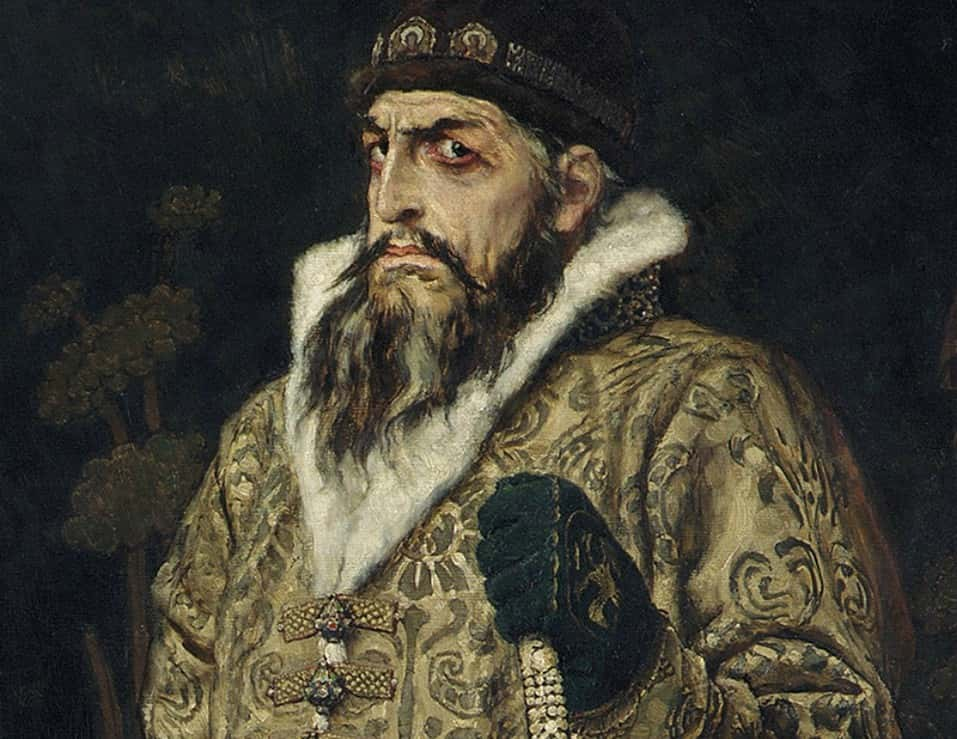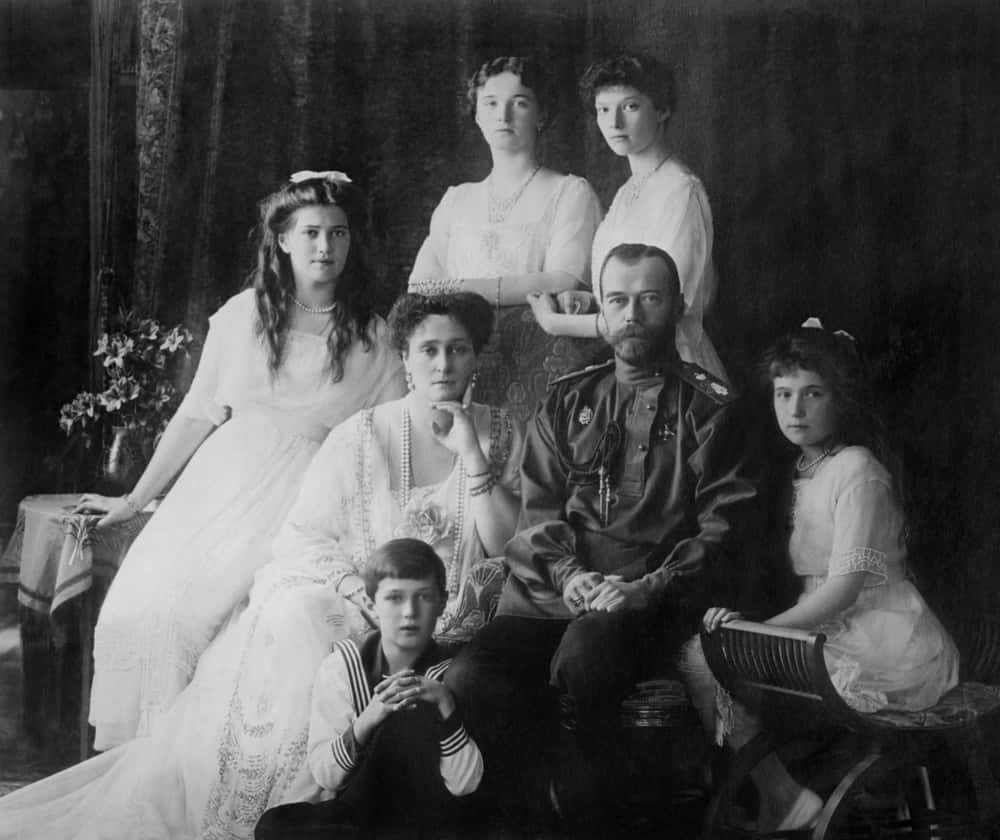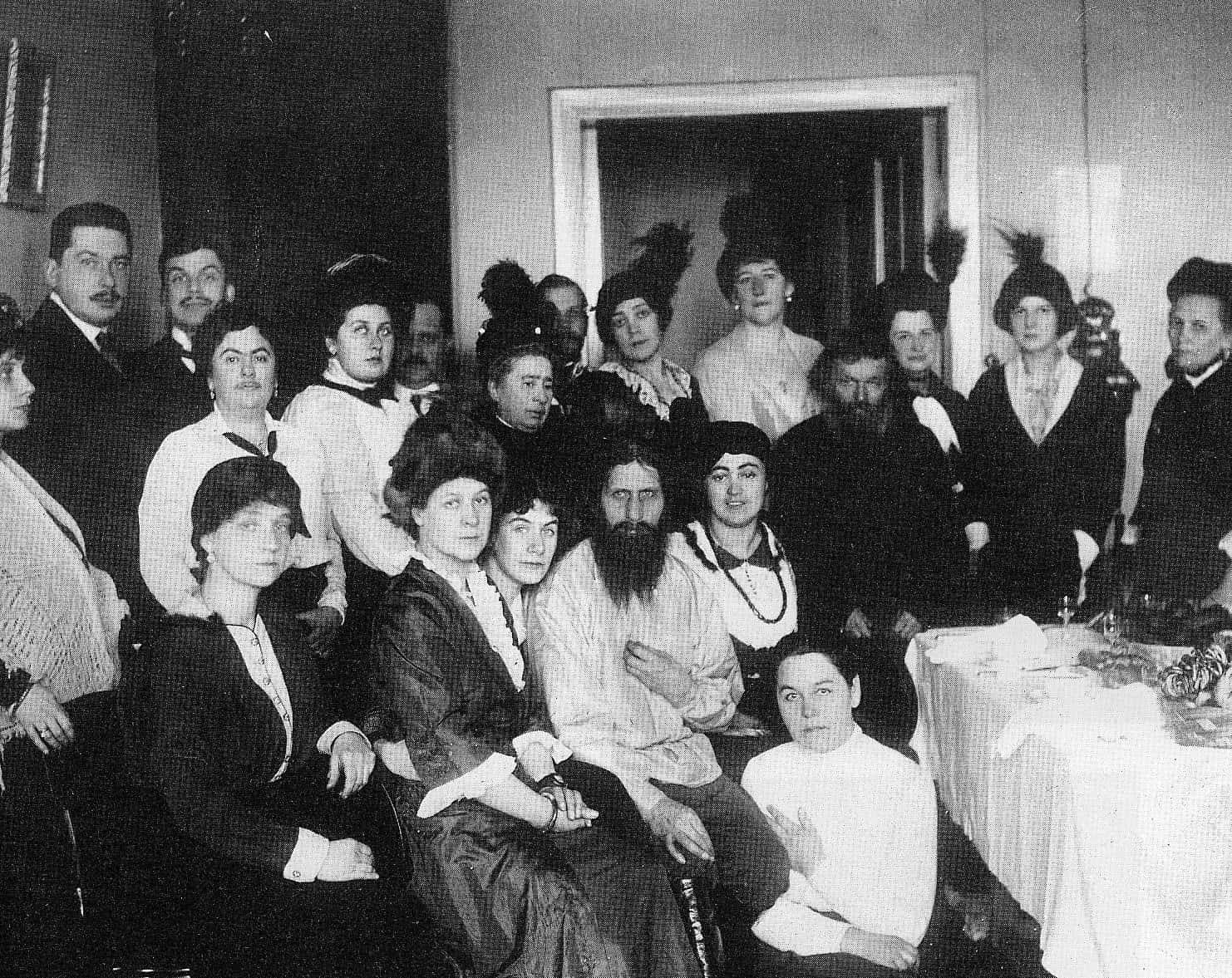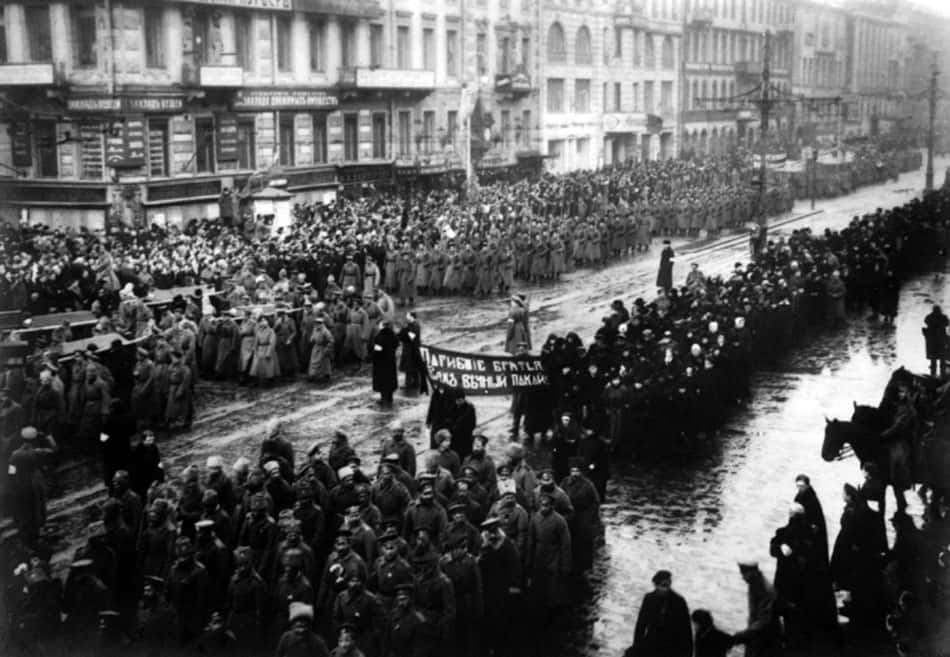“[Russia] is a riddle wrapped in a mystery inside an enigma.” —Winston Churchill
The Russian Empire was the third largest in history, had a far reaching influence over the world, and was ruled over by only a handful of families. Here are some little-known facts about the empire and its most interesting rulers.
42. No! We’re Not Named After the Monkey!
The word "Tsar" is a Russian word meaning "emperor" that has its origins in the Latin language. The original word, appropriately, was "Caesar."

41. Not Quite Grand Enough
Starting around the 9th century AD and going from there, the Russian peoples had been ruled by Grand Princes based in either Kiev or Novgorod. However, in the 15th century, a new power bloc emerged from the squabbling Russian states: the Grand Duchy of Moscow.
40. Beginnings
In 1547, Grand Prince Ivan of Moscow declared himself the Tsar of Russia. He would later earn the nickname Ivan the Terrible—but "Terrible" actually meant something closer to "awe-inspiring," rather than "evil."
39. Brutal Power
The Russian empire would often rely on cruel violent acts to sustain their power. Ivan the Terrible in particular was known for this, and would do things like roast his enemies alive in a giant skillet. He was also known to personally supervise the punishment of prisoners when they were stretched on a rack or burned with hot irons.
38. Childhood Memories
Even though the Tsar was supposed to have absolute power, the Russian Empire often had intense brutality within the Russian court itself, with various factions competing for power. One story recounts how a young boy, who would later become Peter the Great, witnessed men tear through his house and liquidate his mother's relatives.
 Peter the Great (1986), NBC Productions
Peter the Great (1986), NBC Productions
37. Imposters!
The Russian Empire suffered from an imposter problem that seemed worse than other periods in history. Imposters would come out of nowhere and claim to be relatives to the Tsar. For example, at least three imposters claimed to be Ivan the Terrible's son Dmitri, who had actually passed as a child.
36. Got to Have a Hobby
Peter the Great had a strange love of "little people," people with dwarfism. He was even known to have an uncovered little person jump out of a giant pie for fun.
 Peter the Great (1986), NBC Productions
Peter the Great (1986), NBC Productions
35. Powerful Women
After messing up her hair with a bad dye job, Empress Elizabeth of Russia had to shave all her hair off. To make it easier to show herself in public, she ordered that all the women in the court also shave their heads, so she wouldn't stick out.
34. Expanding an Empire
Expansion of much of the Russian empire into Siberia was thanks to powerful dynastic merchant families like the Stroganov family, who pushed into the wilderness in search of valuable furs to trade. Cossack mercenaries were often hired as agents to do the family's dirty work. And now I can never have beef stroganoff again.

History's most fascinating stories and darkest secrets, delivered to your inbox daily.
33. Dynasty Tales
The 300-year period of Romanov rule began in 1613 (though the Russian Empire did not officially start until 1721) after Mikhail Romanov, a teenager at the time, was elected by a national assembly that was desperate to get the country out of its Time of Troubles, which lasted from 1598-1613.
32. His Holiness
Mikhail's accession to the throne brought his father, Fyodor Romanov, out of exile. Dear old dad then snatched the reins (and the reign) from his son, becoming the de facto ruler. Fyodor would also rise to become Filaret, meaning the Patriarch of Moscow and all of Russia.
31. Woman Behind the Throne
After the People’s Revolt of 1682, Emperors Ivan V and Peter I ruled together in a kind of unison, though they were both children and their sister Sophia Alekseyevna really held supreme power. Her influence in court was all the more impressive because noble women were generally kept very much separate from politics at the time.
30. Swing the Sword
Peter the Great was a ruler who believed in the great Stark family tradition: The man who passes the sentence should swing the sword. True to his creed, Peter would carry out many executions himself.
 Peter the Great (1986), NBC Productions
Peter the Great (1986), NBC Productions
29. Modernizing Russia
Peter the Great was also the tsar who expanded the Russian empire into a European power, leading a cultural revolution in which he borrowed many western European ideas, mostly based in the Enlightenment, and updated Russian politics and culture into the modern world.
 Peter the Great (1986), NBC Productions
Peter the Great (1986), NBC Productions
28. How’s Your Tooth?
Though Peter did great things for Russia by bringing back the newest advances in technology and science to his motherland, it didn’t always go well for those around him. Once, he decided to learn dentistry, and his nobles were the ones who he forced his practice on.
 Peter the Great (1986), NBC Productions
Peter the Great (1986), NBC Productions
27. Pass the Water
Though Russia is now seen as the capital of type of booze, for a long time during the Empire, it was a sober country due to its religious orthodoxy. My, how things have changed.
26. A Mother’s Job
Running an empire is hard! It was reported that when Nicholas II was crowned emperor as a young adult, he would often respond to important government issues with the quip, “Ask my mother.”
25. Bridge Project
The first bridges of St. Petersburg, which are now part of the city's charm, came under construction at the order of Catherine I. However, she would not be able to oversee their production, as her health was deteriorating.
24. What Secret Authorities?
Nicholas I, like many tsars, was quite paranoid. Though he had a wide-reaching secret authorities force, it wasn’t enough for his taste. He was known for occasionally traveling the country himself to spy on the citizenry. Well, if you want something done right...
23. Smell the Empire
When you breathe in the fresh, seductive scent of Chanel No. 5, the first thing that comes to your mind is...the Russian Empire, right? Oh...no? Well, it was actually invented in Moscow by the chemist Ernest Beaux.
22. Toy Army men
Although he was German, Peter III became Tsar of Russia. He lasted only six months before he was ended and his wife Catherine the Great, also a German princess, claimed the throne for herself. It may have been for the best: Not only could Peter not even speak Russian, he was also an immature adult, and would often play games with toy army men.
21. Catherinian Era
Catherine the Great is regarded as one of the greatest rulers in Russian history, and she was the longest-ruling female leader in the country’s history. Her impact was so great that the period of her rule is known as the Catherinian Era, and is also called the Golden Age of the Russian Empire.
20. Another Roman Empire
When Ivan IV took reign, his coronation ceremony was much in the vein of the Byzantines, as he saw his new empire as an extension of the Roman legacy.
19. Baby Tsar
Being a baby tsar can be a dangerous business. When Ivan VI took the throne into his chubby fingers at the age of two months old, he was overthrown by his cousin Elizabeth only a year later and then placed in solitary confinement. He would remain in confinement for 20 years, where he had no contact and no windows, and eventually developed a mental illness. Later, Catherine the Great stepped in and gave him freedom...by having him liquidated.
18. Dressing up
Empress Elizabeth of Russia was known to have her bit of fun by cross-dressing. Granted, she wasn't the one cross-dressing: she would dress up those around her as the opposite gender to have her fun with them.
17. For the Love of Guns
Empress Anna was very fond of her arms. So fond, in fact, that wild creatures were often brought back from expeditions just for her to shoot and have as trophies. Talk about spoiled.
16. Precious Position
Alexei Romanov, the last heir of the Russian Empire, was not only the youngest of five siblings, he was also the only boy. Being the only son automatically made him the heir to the Russian throne. And since there were not likely to be any spares, it also made him particularly precious to his parents, Tsar Nicholas II and Empress Alexandra, as well as his sisters Olga, Tatiana, Maria, and Anastasia. The child, however, was sickly. He suffered from haemophilia, a genetic disorder that stops the body from creating blood clots in response to injury.
15. Under the Influence
Desperate to heal her son's haemophilia, Alexandra became close with the mystic Rasputin. Rasputin was definitely not popular with the Russian people, but his ability to offer comfort to the ailing Alexei earned him the trust of Nicholas and Alexandra. Alexandra’s isolation made her highly vulnerable to an outside influence, and she wrote Nicholas on a regular basis to give him Rasputin’s views.
14. Healing Touch
As a child, Rasputin disturbed his parents and neighbors with his “divine” abilities. He is claimed to have been able to heal horses simply through touch.
13. Honorable Old Man
Alexandra wasn’t the only one of the Romanovs to share a close relationship with Rasputin. With her encouragement, her children got accustomed to sharing their secrets with him, and they called him “the honorable old man.” Rasputin spoke to the children before bed each night and wrote them letters, and it was revealed after their deaths that the Romanov girls all wore amulets containing Rasputin’s picture.
12. Royal Roots
Tsar Nicholas II’s wife Alexandra was born into royalty. Her parents were Duke Louis IV and Princess Alice of the United Kingdom, and her grandmother was none other than Queen Victoria. That’s quite the blue blood.
11. Wrong Targets
Tsar Nicholas II was the last Tsar of Russia, and he and his family were executed by the revolutionary Bolsheviks in 1918. On the morning of their execution, they were ushered down to the cellar of the house, and the liquidation squad showed up to carry out the executions.
10. Slug-Proof
In the months leading up to their executions, Empress Alexandra had her children sew valuable diamonds into specially made underwear in case they needed quick money for an escape. The day of the execution, the children were wearing this special underwear, which, in effect, acted as slug -proof vests. The bullets bounced off of their clothing, wounding but not ending the children. When the smoke cleared and the murderers discovered that the children weren’t gone , they had to try to end them all over again.
 Nicholas and Alexandra (1971), Horizon Pictures (II)
Nicholas and Alexandra (1971), Horizon Pictures (II)
9. Honestly, This Way Is Just as Bad!
It's still not known for certain how exactly Alexei, along with his sisters, were executed. Based on the condition of the skeletons found, a rather chilling theory is that while Nicholas II was proven to have been ended, his children may have been doused with acid and burned, possibly while they were still alive.
8. Perpetuating the Myth
For many years after the last Romanovs passed, rumors circulated that the youngest Romanov girl, Alexei's sister Anastasia, had escaped and was still living somewhere under a different identity. Over the years, over 100 women have claimed to be Anastasia, keeping the myth alive.
7. I'm Her!
Of the many women who claimed to be Anastasia, one woman, Anna Anderson, became the most famous. She first emerged sometime between 1920 and 1922 with the claim that she had escaped with the help of a sympathetic guard. Between 1938 and 1970, she persisted in her claim, fighting a lawful battle for recognition, and although some people who had known Anastasia disbelieved her story, others who also knew the Princess were convinced it was her.
But not everybody who visited Anna Anderson believed that she was Anastasia. For one thing, she didn’t recognize people she should have known, and Anastasia’s grandmother, the Dowager Empress Marie, refused to even meet with her. Anastasia’s aunt Olga did visit, but stated that she was “looking at a stranger.” Everyone wanted so deeply to believe the girl had been saved, but ultimately they could find nothing to cling to.
6. An Adult Collection
Catherine the Great's public and private images were two very different things. She secretly collected sexually-charged furniture, and even had an adult cabinet adjacent to her suite of rooms. German army men who raided the palace during WII claimed to have stumbled across the adult boudoir full of furniture, and photographed it. Most of the photographs were lost in the conflict , and those that remain are believed to be the only surviving evidence of the furniture.
The furniture wasn't the only thing naughty in the Muscovite palaces--Catherine also employed full-time foot ticklers. A long-standing tradition for Russian royalty, foot ticklers would sing sensual ballads while tickling their master's feet to provide relaxation and arousal.
5. Proof at Last
In 1994, 10 years after her passing, Anna Anderson's tissue was compared with a sample from Prince Philip of England, but there was no match, disproving her claim once and for all. It's now widely believed that Anderson was actually Franziska Schanzkowska, a mentally-ill Polish factory worker.
4. Demise of a Mistress
Mary Hamilton was the royal mistress to Peter the Great, and lady-in-waiting to Empress Catherine I, when she was executed for the theft of Catherine’s jewelry, abortion, and the ending of her own infant. After she was decapitated, Peter held her head up to the crowd and, being the learned man he was, gave a lesson on anatomy before kissing her goodbye.
3. Passed a Mundane Demise
Gossip had a tendency to follow Catherine the Great wherever she went, and continued to follow her even after her passing. Her enemies at court spread rumors about her demise, with some claiming she’d passed on the toilet, and others that she’d passed while engaging in intimate relations with a horse. None of those were true: she passed in her bed the day after suffering a stroke, at the age of 67.
 Dmitry Levitzky, Wikimedia Commons
Dmitry Levitzky, Wikimedia Commons
2. The Name Speaks for Itself
After the passing of Ivan the Terrible's first wife, the Tsar became erratic and paranoid. Ivan started to suspect that the noblemen of the wealthy city of Novgorod caused the deaths of his mother and wife, and had the city along with its people destroyed.
1. What Have I Done, My Son?!
But that was the least of Ivan's paranoia: On the 15th of November 1581, Ivan witnessed his pregnant daughter-in-law wearing clothes that he determined to be less than appropriate. He proceeded to physically assault her until Ivan's son heard her screams and accosted his father.
Things had already gone way too far, but then Ivan struck his son’s temple with his scepter in a fit of rage. The head wound proved fatal, much to the Tsar's horror. This, coupled with his daughter-in-law’s miscarriage due to his attack, immortalized Ivan’s image as a mentally unstable tyrant.
Sources: 1, 2, 3, 4, 5, 6, 7, 8, 9, 10, 11, 12, 13, 14, 15, 16, 17, 18, 19, 20, 21, 22, 23, 24, 25, 26, 27, 28, 29












































